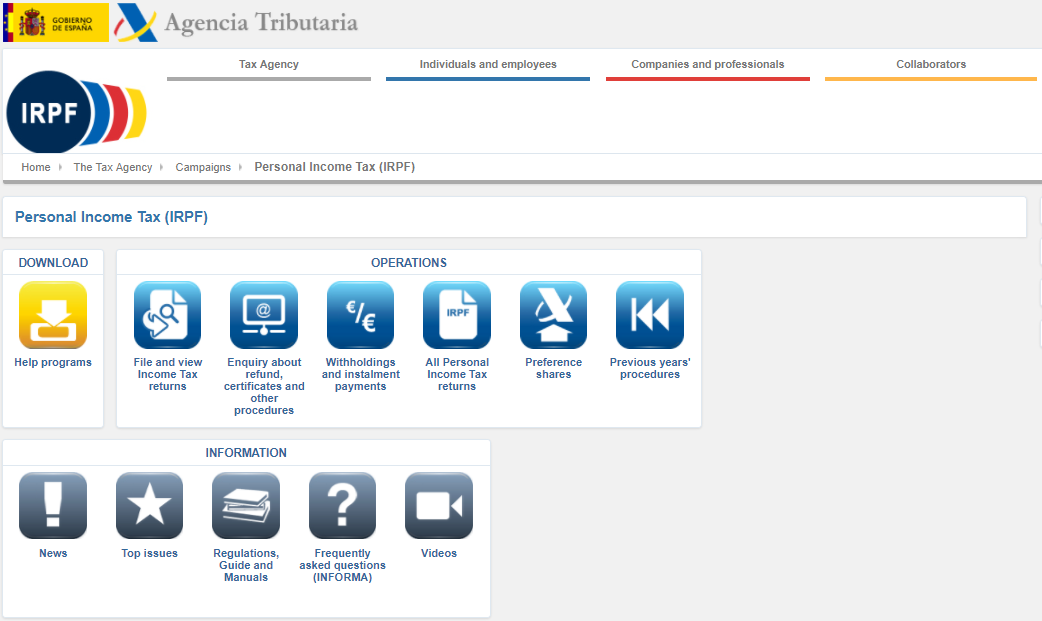[:en]Most teachers who start working with us, do not understand their payslip. Which is completely understandable, spaniards don’t understand theirs either. Let’s try to shed some light on this.
Why? Because I think a lot of the tension between teachers and academies comes from lack of understanding (and from lack of explaining). Teachers should know their rights, and conditions.
So, you’ve managed to agree on a rate, you understand the type of contract you are hired under, and you get your payslip. As any payslip, it contains your gross amount and net amount (gross minus taxes). One of those taxes is the I.R.P.F. and we will explain this tax today.
I.R.P.F stands for Impuesto sobre la Renta de las Personas Físicas. It is Spain’s Personal Income Tax and, as such, it is not easy for an employee to calculate. It depends on too many factors. For today’s article we will consider two cases: employees and self employed.
Employees.
The main question an employee has regarding the IRPF is if the percentage deducted on the payslip is enough or not. The tax agency sets an amount for each case depending on your earnings and situation (family, certain exceptions etc). The percentage is set by the financial department of a company and can be modified by the employee if he so demands.
If you pay less than you are due per month, you will have more money in your hand each month. But when you fill in your annual tax statement you will have to pay the difference back (positive tax statement result). If you pay more than you are due, you will earn less each month, but you will have a negative tax statement result and so the tax agency will pay that amount back to you.
It seems reasonable to pay more and so get paid when the annual tax statement comes. For many it is a sort of saving method. But more than what? How much IRPF do I have to pay?
The factors affecting IRPF change every year. The Agencia Tributaria (the agency in charge of taxes in Spain) publishes an online simulation each year for you to make an estimate of the percentage to be used on your payroll. To access the simulation go to this link, look for the Withholdings and instalment payments , and click on Withholdings Calculation. It is a tool even financial advisors use (sorry, it’s in Spanish).
You can use the previous link (or other online calculators) to check if you are paying the right amount of taxes. Please do so and, if you have any doubts, don’t hesitate to ask your employer. It’s everyone’s right to know why they are paying the amount of taxes they are paying and even ask to pay more if the wish to do so.
Here you will also find:
- Informative table on applicable withholding rates (2018)
- Algorithm calculating the on-account Personal Income Tax withholding rate applicable to earned income 2018 Personal Income Tax
- Resources from previous years.
Self employed.
When you are self employed you have to decide if you are under Estimación Directa or Estimación Objectiva. Most companies use the Estimación Directa, and if you don’t know you are probably using it too (teachers are in Estimación Directa).
Some autónomos and some companies use the so called módulos of the Estimación Objectiva. But the government is trying to get rid of it.
For those using Estimación Directa the IRPF is a percentage of your profit.
When you charge clients you have to (please check this with your legal advisor as it might change with time, these are only guidelines) :
- Deduct IRPF from the total of your bill (yes, this is deducted from your bill).
- The first three years you can deduct a 7% (please read this).
- From then onwards you have to deduct a 15%.
- You are not responsible for paying IRPF, the company hiring you must pay that amount you’ve deducted when they declare their IRPF every three months using the Modelo 130.
This is what is called practicando retenciones (retaining taxes). - Therefore you don’t have to deduct the IRPF if you are billing private individuals. They will not declare the IRPF and in their case your bill is really just a ticket. Only deduct IRPF when billing companies or self employed professionals.
- If at least 70% of your clients deduct IRPF for you, you don’t have to fill in Modelo 130 as instructed here.
[:]

